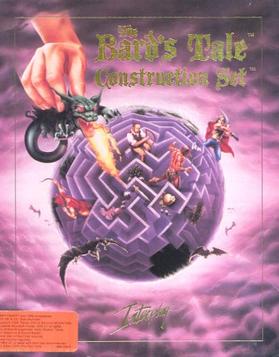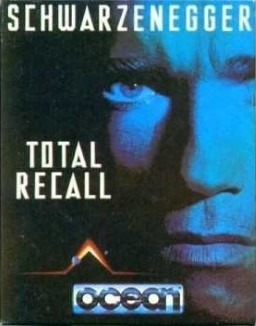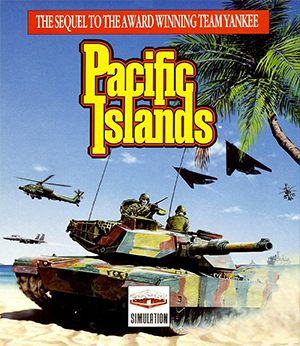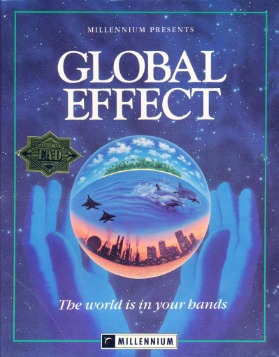Knightmare is a British children's adventure game show, created by Tim Child, and broadcast over eight series on CITV from 7 September 1987 to 11 November 1994. The general format of the show is of a team of four children – one who takes on the game, and three acting as their guide and advisers – attempting to complete a quest within a fantasy medieval environment, traversing a large dungeon and using their wits to overcome puzzles, obstacles and the unusual characters they meet along the journey.

The Chaos Engine is a top-down run and gun video game developed by The Bitmap Brothers and published by Renegade Software in March 1993. The game is set in a steampunk Victorian age in which one or two players must battle the hostile creations of the eponymous Chaos Engine across four landscapes and ultimately defeat it and its deranged inventor.

Space Hulk is a 1993 real-time tactical video game for MS-DOS, Amiga and PC-98. The game was based on Games Workshop's 1989 board game of the same name. Set in the fictional Warhammer 40,000 universe, the player directs squads of Space Marines, genetically enhanced armoured soldiers, in their missions to protect the human race from deadly aliens. Space Hulk was developed and published by Electronic Arts, with support from Games Workshop.

Liberation: Captive 2 is an Amiga role-playing video game that was written by Byte Engineers and published by Mindscape in 1993. It is the sequel to Captive.

Oh No! More Lemmings is an expansion pack for the puzzle video game Lemmings by DMA Design. It contains 100 single-player levels and six music tracks. The Amiga version also includes 10 two-player levels. The game requires either the install disk from the previous Lemmings, or, in a standalone version, the game manual, for use as a copy protector. The new levels are separated into five difficulty categories, each with 20 levels.

King's Quest IV: The Perils of Rosella is a graphic adventure game developed and released by Sierra On-Line for the MS-DOS, Amiga, Apple II, Apple IIGS, and Atari ST computers in 1988. The player takes on the role of Princess Rosella, daughter of King Graham of Daventry and the twin sister of Gwydion/Alexander, who must save her father and a good fairy and destroy an evil witch. Critically acclaimed, it was one of the first PC games to support a sound card.

King's Quest VI: Heir Today, Gone Tomorrow is a point-and-click adventure game, first released in 1992 as the sixth installment in the King's Quest series produced by Sierra On-Line. Written by Roberta Williams and Jane Jensen, King's Quest VI is widely recognized as the high point in the series for its landmark 3D graphic introduction movie and professional voice acting. King's Quest VI was programmed in Sierra's Creative Interpreter and was the last King's Quest game to be released on floppy disk. A CD-ROM version of the game was released in 1993, including more character voices, a slightly different opening movie and more detailed artwork and animation.

The Bard's Tale Construction Set is a computer game creation system that allows for the creation of dungeon crawl video games based on the Bard's Tale game engine. It was developed by Interplay Productions in 1991 and distributed by Electronic Arts. It was released for the Amiga and MS-DOS.

Captive is a science fiction role-playing video game released by Mindscape in 1990. In the style of Dungeon Master, it uses pseudo-3D realtime graphics from a first-person perspective. It was released for Amiga, Atari ST, and, in 1992, MS-DOS.

The Immortal is an isometric action-adventure game originally created for the Apple IIGS. It was soon ported to the Amiga, Atari ST, DOS, Nintendo Entertainment System, and Genesis. A wizard is attempting to find his mentor in a large and dangerous labyrinth. It has a high degree of graphic violence. In 2020, it was re-released for Nintendo Switch.

Knightmare is a video game released by Activision in 1987 for ZX Spectrum, Amstrad CPC, Commodore 64, and Atari ST. It was written by Mev Dinc, J.P. Dean, E.M. Dean and Nick Cooke, and is based on the Anglia Television show Knightmare. Four years later, Mindscape released entirely different game based on the show, also called Knightmare, for the Atari ST and Amiga.

Indiana Jones and the Last Crusade: The Action Game was published in 1989 by Lucasfilm Games, based on the film of the same name. The game was released for the ZX Spectrum, Amstrad CPC, Commodore 64, Atari ST, Amiga, IBM PC, MSX, Master System, NES, Game Boy, Sega Genesis and Game Gear.

Ruff 'n' Tumble is a 1994 platform run and gun video game developed by Wunderkind and published by Renegade Software for the Amiga. An Amiga CD32 version was planned but never released. It was the only game made by Wunderkind. It stars Ruff Rodgers, embarking on a quest across an alien planet to reclaim his marbles after one of them fell into a portal inside a rabbit hole while playing with his collection in the park, and free the planet from Dr. Destiny and his Tinhead army. Through the journey, the player explores and search through each level for items and power-ups, as well as fight enemies and defeat bosses.

Total Recall is a 1990 platform game developed and published by Ocean Software that was released for the Commodore 64, Amiga, Amstrad CPC, ZX Spectrum, Atari ST, and Nintendo Entertainment System. Total Recall is based on the 1990 film of the same name.

Bomberman is an action-maze video game originally developed and published by Hudson Soft for the PC Engine in Japan on 7 December 1990 and later in North America for the TurboGrafx-16 by NEC in 1991. Belonging to the Bomberman franchise, it is a re-imagining of the first game in the series starring White Bomberman on a quest to rescue Lisa, the kidnapped daughter of his inventor Dr. Mitsumori, from the castle of Black Bomberman while defeating evil monsters and villains that work for him. The game was later ported to home computers, each one featuring changes compared to the original version. Conversions for other platforms were in development but never released. The title garnered positive reception from critics since its initial release on the PC Engine/TurboGrafx-16 and later on home computers.

Fun School is a series of educational packages developed and published in the United Kingdom by Europress Software, initially as Database Educational Software. The original Fun School titles were sold mostly by mail order via off-the-page adverts in the magazines owned by Database Publications. A decision was made to create a new set of programs, call the range Fun School 2, and package them more professionally so they could be sold in computer stores around the UK. Every game comes as a set of three versions, each version set to cater for a specific age range.

Pacific Islands is a computer game published by Empire Interactive in 1992 for the MS-DOS, Amiga and Atari ST. It is the sequel to the 1987 video game, Team Yankee.

Deliverance is a platform game developed and published by 21st Century Entertainment in 1992 for the Amiga and Atari ST, and in 1993 for Macintosh. It is a remake of the 1990 Hewson Consultants game Deliverance: Stormlord II, featuring new graphics and sound as well as a changed gameplay system and a different plot. A version for the Sega Genesis was planned but never released.

Elf is a 1991 video game published by Ocean Software.

Global Effect is a 1992 video game published by EA/Millennium Interactive.



















